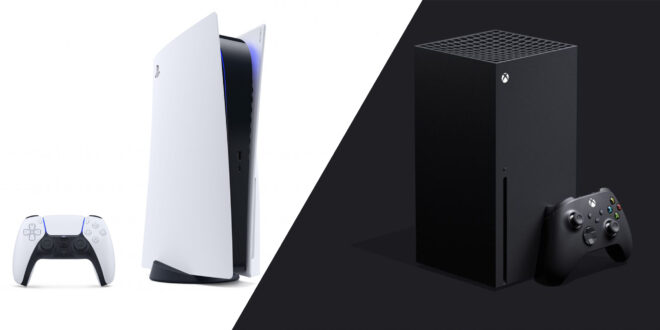It what amount to a somewhat uncanny similarity, both the PlayStation 5 and Xbox Series S|X consoles have sold almost exactly the same numbers as their previous generation predecessors during the same period.
To be more precise, figures from Ampere Analysis stated that the Xbox Series consoles had sold 2.8m units, compared to 2.9m for the Xbox One back in 2013, while the PlayStation 5 (both versions) sold 4.2m, exactly the same as PS4 in 2013.
Well, that all seems a bit too neat.
And that’s against a background of very different roll outs. The PlayStation launched in Japan this time around, unlike the delayed PS4 launch there. While Microsoft launched in three times as many territories, Ampere’s Piers Harding Rolls points out.
And of course the games industry has grown considerably over the last seven years, and further to that the pandemic has super-charged demand for consoles. At least here in the UK they are still both sold out constantly. Both companies are then very obviously supply constrained.
Although that brings its own questions. For example, given the obvious increase in demand over the last generation, why were neither company able to produce more consoles than they did seven years ago (a time when many were prophesying doom for the games console, and the Xbox One in particular had a very rocky introduction).
Of course the new hardware is very impressive, even by the standards of 2020 compared to 2013, these feel like more high-end devices. So maybe chip yields for the core CPU/GPU are limiting supply, and those things are hard to scale up on, compared to the rest of the production process.
Even then, why hasn’t the Xbox got greater parity with the PlayStation? After all, if Microsoft could produce as many consoles as Sony then surely its figures would be far closer, they are all sold out after all.
Is Sony’s chip design (less transistors but more speed to compensate) proving easier to produce, or maybe it’s Sony’s slightly more traditional hardware design that’s helping out here? Is it possible that Microsoft simply underestimated the demand, although that seems unlikely, surely it knew it was in a better place that in 2013.
We can only conclude that Microsoft is being out produced by Sony. Something that it will need to correct quickly if it wants to keep up. The company isn’t console-hardware centric in its outlook, but the hardware remains a key factor in signing up consumers to Game Pass, and will “remain a cornerstone of the overall Xbox business during at least the next five years,” says Harding-Rolls
But when it comes down to that production rate – many questions, not so many answers.
At least one thing is clear, the winner of the console sales chart for 2020 is of course… the Switch. Which with a full year’s sales, despite hardware shortages there too, clocked up an incredible 26m sales. Which Harding-Rolls points out is enough to beat the Wii’s best ever year by a couple of million.

 MCV/DEVELOP News, events, research and jobs from the games industry
MCV/DEVELOP News, events, research and jobs from the games industry




